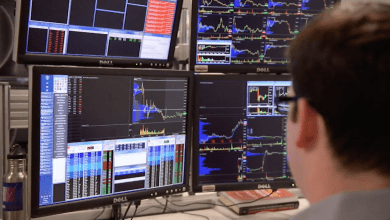
What makes the US one of the most influential diamond markets in the world? With its rich history, established trading hubs, and evolving consumer demands, the United States continues to set global trends in the diamond industry.
From the iconic 47th Street Diamond District in New York to the luxury-driven markets in California and Arizona, the US remains a dominant force in both diamond retail and wholesale. Let’s explore the historical roots of the diamond market, examine key states driving its growth, and provide insights into the future trends shaping this vibrant industry.
The Evolution of the Diamond Market in the US
The US diamond market traces its origins to the late 19th century, with diamonds becoming more accessible through trade connections with mining regions such as South Africa. By the 20th century, diamonds had become a cultural symbol of wealth and romance, solidified by De Beers’ iconic “A Diamond is Forever” campaign in 1947.
This marketing effort sparked the now-common tradition of diamond engagement rings, driving significant demand. By the mid-20th century, over 80% of American brides received diamond engagement rings, marking a major boom for the industry.
New York City’s Diamond District, established in the early 20th century, became the heart of diamond imports and trade, handling up to 90% of diamonds entering the US.
Today, the US remains a vital player in the global diamond market, accounting for approximately 45% of global diamond retail demand as of 2022. This historical growth laid the foundation for modern diamond hubs across the country, particularly in states like California and Arizona, which are now pivotal in the industry.
Key Diamond Hubs in the US: Leading the Market
New York: The Nation’s Diamond Capital
New York City continues to dominate the US diamond market, with the 47th Street Diamond District handling about 90% of the nation’s diamond trade. The district is home to over 2,600 independent businesses, ranging from wholesalers and retailers to expert cutters.
New York’s status as a global hub is strengthened by its deep ties to international diamond markets in India, Belgium, and Israel. As of 2022, New York’s retail jewelry market was valued at over $7 billion, a testament to its enduring importance.
New York’s affluent population, combined with its role as a financial powerhouse, drives a significant portion of luxury diamond purchases. High-end stores in SoHo and Fifth Avenue cater to elite buyers seeking large, high-quality stones. The city’s strong legal and financial systems also make it a hub for high-value transactions, further cementing its place in the global diamond trade.
Arizona: The Southwest’s Gemstone Giant
Arizona’s diamond market is rapidly growing, thanks in part to its strong connection to the state’s gold and gemstone industries. The cities of Phoenix, Scottsdale, and Mesa have emerged as key hubs for diamond trading, driven by a growing population and a robust luxury goods market. In Mesa, in particular, opportunities to easily sell diamonds have increased as more independent jewelers and buyers establish themselves in the area, catering to both locals and visitors looking to invest in or liquidate their diamond assets.
Arizona’s jewelry market was valued at $1.2 billion in 2023, with diamonds playing a significant role. The state’s rich history in gold mining also ties into its diamond trade, appealing to buyers looking to combine diamond and gold investments.
Arizona has also carved out a niche in the estate and antique diamond market, catering to collectors and vintage enthusiasts. Many independent jewelers in the state specialize in estate jewelry, contributing to Arizona’s unique position in the national market. The state’s proximity to Native American jewelry traditions and interest in sustainable options like lab-grown diamonds further strengthen its place as a growing player in the US diamond industry.
California: Luxury, Celebrity, and Innovation
California is a major player in the US diamond market, particularly due to its luxury-oriented cities like Los Angeles and San Francisco. Los Angeles is home to the largest jewelry district on the West Coast, with over 5,000 businesses involved in the trade of diamonds and other gemstones.
California’s luxury goods sector, driven by the diamond market, contributed significantly to the state’s $16 billion luxury industry in 2022. Los Angeles’ strong ties to Hollywood also ensure that diamonds remain a staple on red carpets and in the collections of celebrities.
San Francisco, buoyed by the tech boom, has seen increasing demand for luxury diamonds among newly wealthy entrepreneurs. California is also leading the way in lab-grown diamonds, with many retailers embracing these sustainable and ethically sourced alternatives. In 2022, lab-grown diamonds accounted for approximately 10% of the US diamond market, with further growth expected in the coming years due to consumer preference for ethical products.
Future Trends in the US Diamond Market
The US diamond market is undergoing significant transformation, driven by the rise of lab-grown diamonds and the expansion of e-commerce. Lab-grown diamonds, which are chemically identical to mined diamonds, accounted for nearly 10% of the global diamond market in 2023.
In the US, younger consumers, particularly Millennials and Gen Z, are showing strong preferences for these ethically sourced alternatives. This trend is expected to continue, with analysts predicting that lab-grown diamonds could capture an even larger share of the market by 2030.
Another key trend is the shift toward digital platforms for diamond sales. In 2022, online diamond sales in the US grew by 22%, driven by the increasing convenience of e-commerce and the integration of virtual showrooms and blockchain technology to ensure transparency.
As sustainability and ethical sourcing become more critical to buyers, retailers are adapting to meet these demands. These changes, coupled with technological advancements, are likely to reshape the US diamond industry, prioritizing transparency and sustainability.
Conclusion
What lies ahead for the US diamond market as it adapts to new consumer demands and technological advancements? From its historical roots as a global trading hub to the rise of lab-grown diamonds and digital platforms, the US market remains a key player in shaping the future of the diamond industry.
As New York, California, and Arizona continue to innovate and evolve, the market is poised for further growth, driven by an increasing emphasis on sustainability and ethical sourcing. The future of the diamond industry will likely blend luxury with responsibility, ensuring its continued relevance in the years to come.



